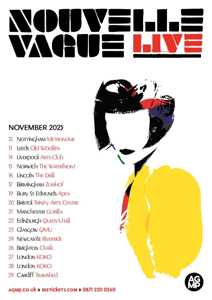Nouvelle Vague: Architects of Sonic Alchemy-Where Punk’s Fury Meets Bossa Nova’s Silk |
||
 
Nouvelle Vague: Alchemists of Melancholy, Weavers of Sonic Paradoxes |
||
|
||
| Writer: Vlad Ionut Piriu | ||
|
I don't have Facebook
|
||
Nouvelle Vague: Architects of Sonic Alchemy-Where Punk’s Fury Meets Bossa Nova’s Silk | FESTIVALPHOTO








